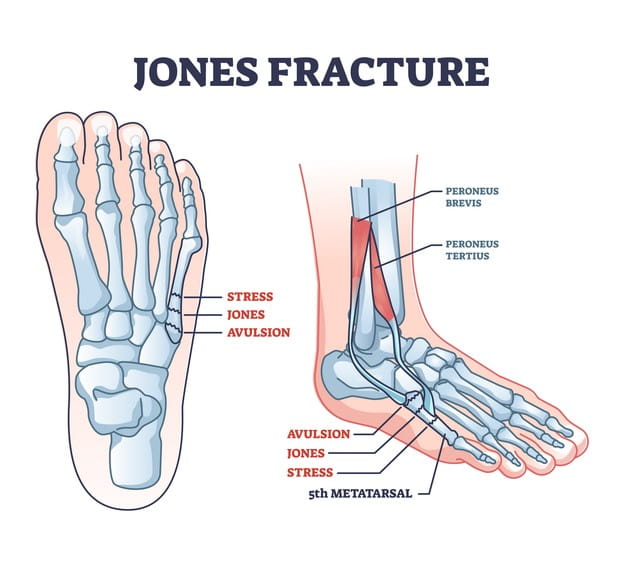
What’s the Deal with the Jones Fracture?
This weekend Streamline’s client care coordinator, Mariel, performed with the Madison based contemporary dance company, Li Chiao-Ping Dance, at the SEED Festival performances at the beautiful Four Winds Farms in Fitchburg! The performance was lovely except for one unfortunate incident: one dancer broke her foot on stage! This dancer was the consummate professional – finishing the piece without even us fellow dancers noticing anything had happened. Upon exiting the stage, she told us “I think I sprained my ankle!” She iced, elevated, and headed home to get some well deserved rest. In the morning, she woke up with a great deal of pain and bruising on the pinky toe side of her right foot. Upon a visit to Urgent Care, she was told that her fifth metatarsal was broken. We were heartbroken that she couldn’t join us for the second performance on the following evening. We are all wishing her a speedy recovery!
This event got me thinking and then researching…turns out that this kind of break is more common than you may think! It is called the “Jones Fracture” aka a break in the pinky toe bone (fifth metatarsal). Specifically, this break occurs at the base near the mid-foot (not the toe). For you fellow anatomy nerds, this region of the foot is called the metaphyseal-diaphyseal junction (typically 1.5-3 cm from the base of the bone).

I was surprised to learn that it is named after Sir Robert Jones who first described the injury in the 1900s after sustaining the fracture himself, while dancing! In our lovely dancer’s case, the injury occurred due to inversion of the foot (aka rolling the ankle inwards) however it can also occur with repetitive stress or sudden trauma from jumping or pivoting. For these reasons, the injury is pretty common among dancers, athletes (especially sports with running or cutting) and military recruits. Often, blood supply in this area of the foot is poor which makes the healing process slower and increases the risk of nonunion (failure to heal). Symptoms include pain and swelling the outside of the foot, pain with weight bearing, and bruising. Diagnosis usually requires an X-ray but in some cases a MRI or CT scan is needed if the fracture is more subtle or stress related. Treatment can go one of two routes: nonsurgical or surgical. Non-surgical treatment includes immobilization via cast, boot, or splint, followed by non-weightbearing for 6-8 weeks (think crutches…ouch!) and regular follow up imaging to monitor the healing. Surgical treatment can shorten the recovery time via an intramedullary screw fixation which reduces the risk of nonunion. For athletes and dancers, the surgical route is often preferred because it decreases their recovery time and decreases risk of not healing fully! With appropriate treatment and proper rest, most Jones Fracture patients do recover well!

And of course with any injury keeping you from your best game or next dance recital: PT is your key to recovery and prevention! Streamline has got your back, knee, and first through fifth metatarsals! Give us a ring if you think you may have a Jones Fracture or anything else achey!


